IOCCG news bulletins include items of interest from the IOCCG, its sponsoring agencies, and the broader ocean colour community. Please let us know if there are any other items of interest you would like to see included in the next IOCCG news bulletin by contacting Raisha Lovindeer (raisha@ioccg.org).
News from IOCCG
IOCCG-29 Committee Meeting
The 29th annual meeting of the IOCCG Committee took place virtually from 14 to 16 April, 2025.
The Committee discussed plans for the 2025 International Ocean Colour Science Meeting; reviewed the status of existing working groups; and approved a new IOCCG working group on LIDAR for ocean applications. The IOCCG report from the working group on Intercomparison of Atmospheric Correction Algorithms over Optically-Complex Waters is expected to be available by the end of the year, as well as the draft report from the working group on Conducting Benthic Reflectance Measurements for community review. The Committee approved the terms of reference of a new task force on Harmonizing Global Ocean Colour for Long-Term Climate and Ecosystem Monitoring; and reviewed and discussed activities within CEOS, including version 2 of the CEOS-ARD Aquatic Reflectance Product Family Statement, the Aquatic Carbon Roadmap, and synergies with the recently established CEOS Coastal Observations Applications, Services and Tools (COAST) Virtual Constellation.
Minutes of the meeting will be made available on the IOCCG website at ioccg.org/what-we-do/committee-meetings.
IOCS-2025 Registration Now Open
Registration is now open for the 6th International Ocean Colour Science Meeting (IOCS-2025) Ocean Colour: serving Earth system science & our society. IOCS-2025 is hosted by ESA and EUMETSAT and is scheduled to take place in Darmstadt, Germany on 1-4 December 2025. The schedule includes plenary and poster sessions, as well as nine interactive breakout sessions to review and add recommendations to advance the science and application of ocean colour radiometry.
Several training sessions have been planned in conjunction with the IOCS meeting, and hosted at EUMETSAT. These include the following sessions on 5 December 2025 which are free with meeting registration: Introduction to LIDAR for ocean colour applications, Processing above water in situ radiometry with HyperCP; the ThoMas Match-up Toolkit. A 4-day training course on Multi-sensor satellite ocean colour will also be held after the IOCS, on 7 – 10 December, hosted by EUMETSAT and in conjunction with IOCCG and other partners. Some funding support will be available for participants to attend the training and conference, with more details coming soon. Read more about all training opportunities on the IOCS website.
Call for IOCS-2025 Poster Abstracts & Travel Support Applications
Abstracts for posters are now being accepted under the themes: carbon and climate, biodiversity, water quality, and other ocean colour research.
A limited number of travel scholarships are available for students, early career scientists, and scientists from developing nations who are presenting a poster and/or attending training at the meeting. (iocs.ioccg.org/register/#travelsupport)
The deadline for submission for poster abstracts and requests for travel support is 15 August 2025.
Visit the IOCS-2025 website for details.
News from NASA
Update on the NASA PACE mission
The NASA Plankton, Aerosol, Cloud, ocean Ecosystem (PACE) mission reached its one-year birthday on 8 February 2025 and first light anniversary on 11 April 2025.
image caption: Example output of the MOANA (Multiple Ordination ANAlysis) algorithm applied to PACE OCI data. (image will link to https://oceandata.sci.gsfc.nasa.gov/l3/ .)
Notable achievements and activities from the past several months include:
- Completion of the second full mission reprocessing (Version 3) for OCI Level-1B and Level-2/3 ocean color products. This included a major update of the OCI instrument calibration based on on-orbit measurements, first use of vicarious calibration for ocean color, and refinements to the atmospheric correction algorithm. Preliminary validation results for remote-sensing reflectances are now available.
- Initial release of the OCI-derived MOANA phytoplankton community composition retrieval suite, which is available from NASA OB.DAAC’s Level 3 & 4 Browser. Watch a recent PACE presentation by Ivona Cetinic that provides an overview of the MOANA algorithm and a demonstration of where to get these data.
- Completion of second full mission reprocessing for SPEXone (Version 3) and initial release of SPEXone-derived RemoTAP aerosol products over ocean (plus ocean optical properties) suite. These data are available from the NASA OB.DAAC’s File Search.
- Finalization of Version 3 calibration for HARP2 Level-1B/C, with a full mission reprocessing and initial release of the HARP2-derived FastMAPOL simultaneous retrieval of aerosol and ocean optical properties expected in May.
- Hosted the first PACE Land data Users’ Group in April in support of PACE’s hyperspectral-based and legacy terrestrial data products that are now available to download from Earthdata. Learn more and watch the first meeting here.
As always, learn more at https://pace.gsfc.nasa.gov, and more about PACE data validation at https://pace.oceansciences.org/pace_data_matchups.htm.
Save the Date: 2025 PACE Applications Workshop
Save the date for the next NASA PACE Applications Workshop, scheduled to be held 24-25 September 2025, in a virtual format. Updates will be posted on the PACE website: https://pace.gsfc.nasa.gov.
News from EUMETSAT
Recent output of the FRM4SOC Phase-2 project
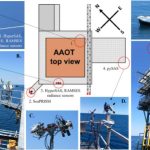 Output from a recent field campaign and study conducted as part of the Fiducial Reference Measurements for Satellite Ocean Color (FRM4SOC) Phase-2 project, funded by the European Commission Copernicus Programme and implemented by EUMETSAT, has showed progress towards community implementation of IOCCG Protocol 3: Protocols for Satellite Ocean Color Data Validation: In situ Optical Radiometry (IOCCG, 2019). Application of the Hyper-in-Space Community Processor (HyperCP) reduced uncertainties and discrepancies in co-located field radiometric data collected from radiometers of different manufacturers and run by different labs. The results demonstrated the capability for collecting field radiometry of sufficient quality for ocean colour satellite validation following the IOCCG protocols and Fiducial Reference Measurement metrology, using portable, off-the-shelf commercial instruments. Results from the study have been published open access in Optica: https://doi.org/10.1364/OE.551042. A new intercomparison event will take place at Acqua Alta Tower in July 2025 with SeaBird and TriOS sensors to test their metrological compatibility with enhanced HyperCP and measurement protocols.
Output from a recent field campaign and study conducted as part of the Fiducial Reference Measurements for Satellite Ocean Color (FRM4SOC) Phase-2 project, funded by the European Commission Copernicus Programme and implemented by EUMETSAT, has showed progress towards community implementation of IOCCG Protocol 3: Protocols for Satellite Ocean Color Data Validation: In situ Optical Radiometry (IOCCG, 2019). Application of the Hyper-in-Space Community Processor (HyperCP) reduced uncertainties and discrepancies in co-located field radiometric data collected from radiometers of different manufacturers and run by different labs. The results demonstrated the capability for collecting field radiometry of sufficient quality for ocean colour satellite validation following the IOCCG protocols and Fiducial Reference Measurement metrology, using portable, off-the-shelf commercial instruments. Results from the study have been published open access in Optica: https://doi.org/10.1364/OE.551042. A new intercomparison event will take place at Acqua Alta Tower in July 2025 with SeaBird and TriOS sensors to test their metrological compatibility with enhanced HyperCP and measurement protocols.
Second Copernicus FRM4SOC Workshop on Calibration and Characterisation
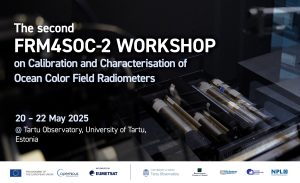
The second Copernicus FRM4SOC Workshop on Calibration and Characterisation of Ocean Colour Field Radiometers will take place from 20 to 22 May 2025 at Tartu Observatory, University of Tartu, Estonia. The main objective of the workshop is to connect field radiometer manufacturers, metrology institutes, calibration laboratories and in situ measurement community, and discuss the following topics:
- present and future challenges in calibration and characterisation of ocean colour radiometers (OCR)
- requirements to achieve FRM quality of in situ measurements for satellite data validation (need for calibration and characterisation of OCR)
- existing guidelines, procedures, tools, and best laboratory practices for OCR calibration and characterisation
- organisation of future comparison measurements
- knowledge exchange on the methods, procedures, and facilities
- visit to the calibration and characterisation laboratory at Tartu Observatory of the University of Tartu
- improvement and harmonisation of the developed guidelines, procedures, and tools.
The registration to the event in person is now closed. However, if you wish to attend online please contact us (JuanIgnacio.Gossn@eumetsat.int and riho.vendt@ut.ee).
Community Updates
SCOR 2025 Call for Working Groups is Open until 16 May
The Scientific Committee on Oceanic Research (SCOR) Secretariat invites proposals for new working groups to commence activities in late 2025. SCOR typically supports 1-3 new working groups annually, pending availability of funds and the outcome of the proposal review. The deadline for submission is 16 May 2025. The selection of new SCOR working groups will take place at the 2025 SCOR Annual Meeting, scheduled to take place in Santa Marta, Colombia on 29-31 October 2025.
The proposal template, newly revised instructions, and FAQs to help prepare the proposals, can be found on the SCOR website: https://scor-int.org/work/groups/proposals/
Release of Version 2.0 of the OSOAA Radiative Transfer Model
Version 2.0 of the open source OSOAA radiative transfer model has been released and is now available online. It replaces the former version 1.6. The OSOAA model is able to simulate the radiance and degree of polarization for an atmosphere-ocean system and for a rough sea surface (see Chami, Lafrance, Fougnie et al., Optics Express, 2015). OSOAA also offers a user-friendly interface. Version 2.0 shows improvements based on the feedback received from users over the last 10 years.
Version 2.0 of the OSOAA model can be downloaded from https://github.com/CNES/RadiativeTransferCode-OSOAA, hosted by CNES.
Other Events and Training
Check for upcoming workshops, conferences, and training events on the IOCCG website: https://ioccg.org/what-we-do/training-and-education/
ESA Living Planet Symposium – register until May 26
Registration is open for the ESA Living Planet Symposium, From Observation to Climate Action and Sustainability for Earth, being held in Vienna from 23-27 June 2025. Click the image for more details.
Employment Opportunities
Check for new research and employment opportunities on the IOCCG website: https://ioccg.org/resources/employment-opportunities/.
Open positions include:
- PhD Position, University of Tartu, Estonia
- Postdoctoral Researcher in Coastal Lagoons Monitoring, CTTC, Barcelona, Spain
- Remote Sensing & Marine Ecosystem Scientist, EC-JRC, Ispra, Italy
- Postdoctoral Fellow, Eawag, ZH, Switzerland
- Postdoctoral Position, University of Victoria, BC, Canada
- PhD Position, Dalhousie University, NS, Canada
If you would like to include a position on this page, please contact Raisha Lovindeer.
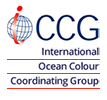
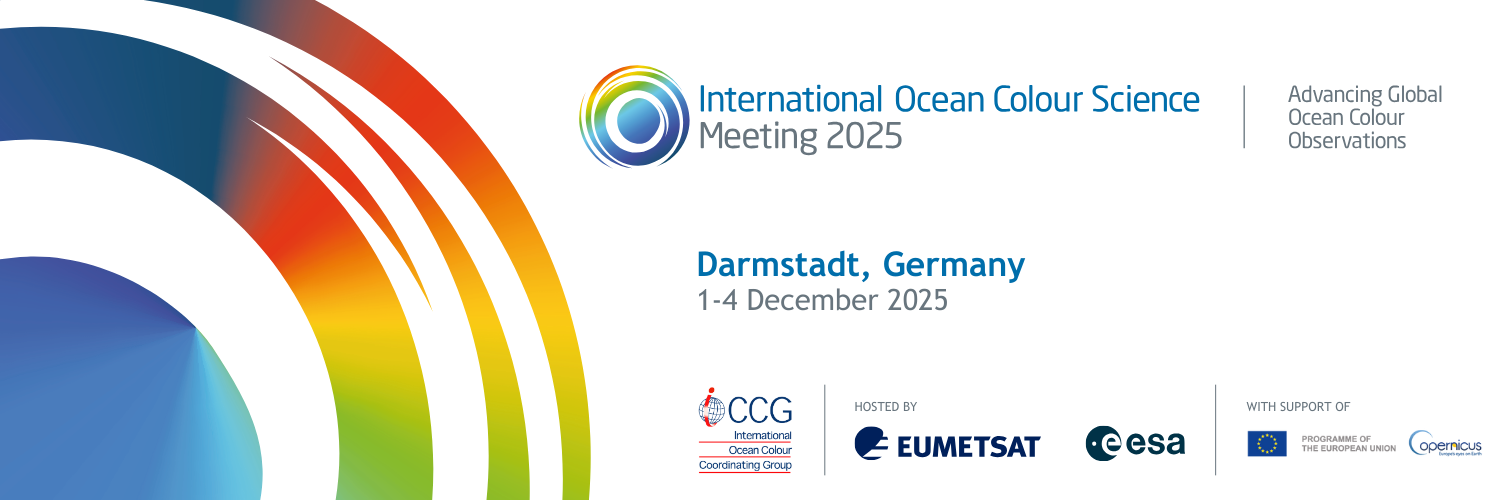

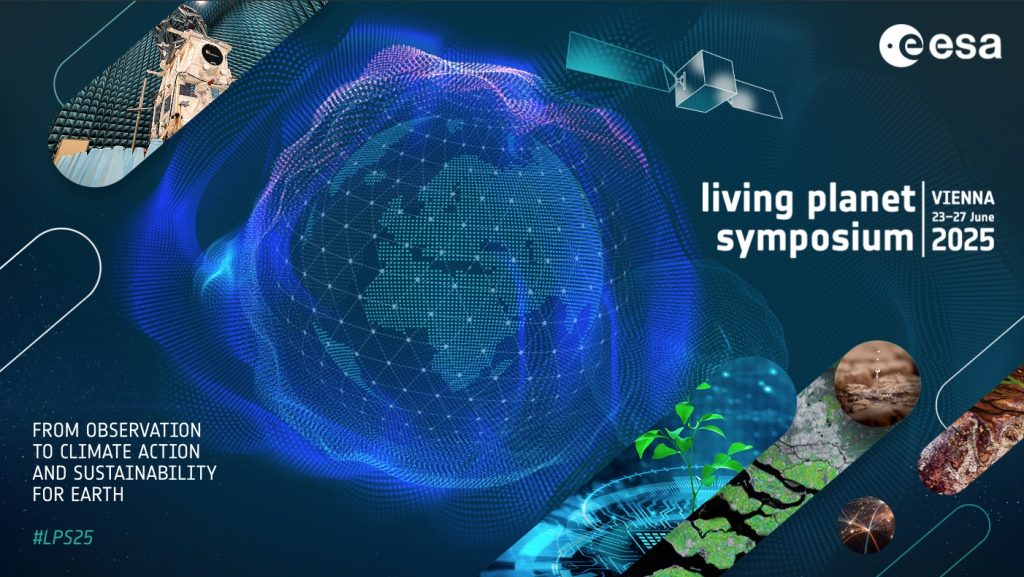

 The sixth International Ocean Colour Science (IOCS) meeting will take place in Darmstadt, Germany from 1 – 4 December 2025, hosted by EUMETSAT and ESA with support from other agencies.
The sixth International Ocean Colour Science (IOCS) meeting will take place in Darmstadt, Germany from 1 – 4 December 2025, hosted by EUMETSAT and ESA with support from other agencies.